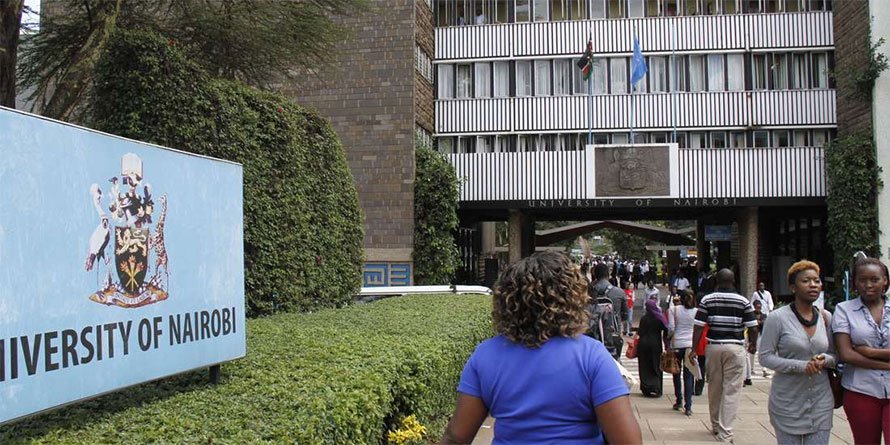University of Nairobi main entrance. FILE PHOTO | NMG Public universities’ debt has hit Sh56.6 billion amid a falling student population and rising salaries, putting at risk their sustainability as State implements their restructuring.
A status report from the Universities Funding Board (UFB) shows the debt as of April 2021 comprises mostly of unremitted statutory deductions which have accumulated penalties.
“Status of debt in universities as of April 2021 was Sh56.638 billion,” said chief executive Geoffrey Monari said.
The revelation comes at a time Kenyan universities are grappling with 38,973 unfilled slots as students failed to take up their admission offers, dealing a blow to the institutions’ already falling revenues.
The public universities have outstanding remittances to the Kenya Revenue Authority, the National Hospital Insurance Fund, the National Social Security Fund, pension schemes, insurance companies, and saccos.
The latest data from the Sacco Societies Regulatory Authority (Sasra) shows public universities and tertiary colleges are the greatest culprits in failing to timely remit the deductions due to deposit-taking saccos.
The institutions owed Sh2.95 billion as of September 2020, which is equivalent to 58.41 percent of the Sh5.05bn owed to saccos.
University of Nairobi vice-chancellor Stephen Kiama revealed in July that the institution owed the Kenya Revenue Authority Sh7.2 billion and had staff pension arrears of slightly more than Sh4 billion.
“This has come as a result of us not costing our services. Over the years the university has continued to develop many programmes to bring students on Module II with the assumption that government would subsidise those students” he told the Business Daily in an interview.
“So we have been undercharging them thinking that we’d use the money government is paying for regular students to cover the deficit. This fee adjustment applies to new students and they can pay in instalments,” Prof Kiama added.
Cash flow challenges for universities have been made worse by the sharp decline of students enrolling for the parallel degree programme courses over the past four years that generated billions for the institutions.Decreasing State capitation to universities is linked to the rapid increase in institutions over a short period and reduced government revenues. The country has 74 universities, 37 of which are public.The International Monetary Fund has pushed Kenya to reform its State-owned institutions, including cutting duplicate roles and trimming the headcount.Kenya is committed to a financial evaluation of three State universities and six parastatals, namely Kenya Airways, Kenya Power, the Kenya Airports Authority, Kenya Railways […]
